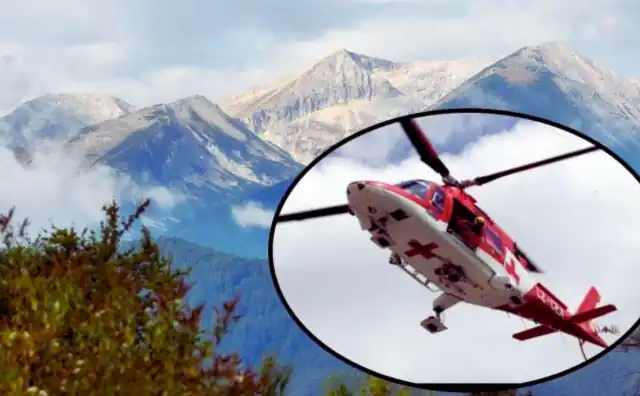
A tragic incident occurred in Bulgaria’s Pirin Mountains on January 29, when a 29-year-old Irish tourist fell into a chute beneath Todorka Peak, later succumbing to his injuries despite rescue efforts.
The young man, who had been taking photos with friends, likely slipped and fell from a height of 600 meters, sparking an urgent response from local authorities.
At approximately 2:00 p.m., the Bulgarian Road Safety Service was alerted to the fall. A medical air ambulance was immediately dispatched to the scene, but it was unable to reach the victim due to technical issues with the helicopter.
The tourist’s location, near the Banderitsa hut in Bansko, made the rescue mission challenging, prompting a call for assistance from the Mountain Rescue Service of the Bulgarian Red Cross.
For over an hour, the rescue team worked tirelessly to reach the victim, eventually transferring him to a hospital in Razlog.
Despite initial reports that the tourist had been transported to Sofia, it was later clarified that he was taken directly to Razlog, where he tragically died from his injuries.
The National Board for the Investigation of Transport Accidents has launched an inquiry into the rescue operation, with a particular focus on the technical failure of the helicopter.
Early findings from the investigation have revealed several irregularities. Notably, there were discrepancies in the flight plan, including the absence of pilot names.
Furthermore, the crew failed to promptly notify the investigation body of the situation, and there are growing concerns about the decision to return the helicopter to Sofia rather than continuing the rescue operation.
The black box of the helicopter is now being analyzed to determine the precise cause of the failure.
Hristo Hristev, Chairman of the National Board for the Investigation of Transport Accidents, expressed concern over the violations and stressed that a thorough investigation will be conducted to uncover any lapses in the emergency response.
The tragic loss of life has cast a shadow over the popular tourist destination of Bansko, which sees thousands of visitors each year.
Authorities are urging tourists to exercise caution when venturing into the mountains, particularly in dangerous and remote areas.
In the wake of the incident, questions about the effectiveness of emergency services in such treacherous conditions have emerged, particularly as the technical difficulties with the helicopter continue to raise concerns about the reliability of rescue operations.
While the investigation continues, the loss of a young life has brought attention to the risks associated with mountain tourism, particularly in extreme environments like the Pirin Mountains.
Local authorities are expected to review and possibly revise safety protocols to prevent similar incidents in the future.
This tragic incident serves as a stark reminder of the potential dangers that come with mountain exploration, and the need for enhanced safety measures and swift, reliable emergency responses.
